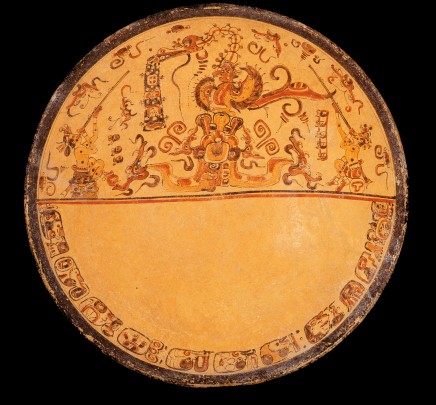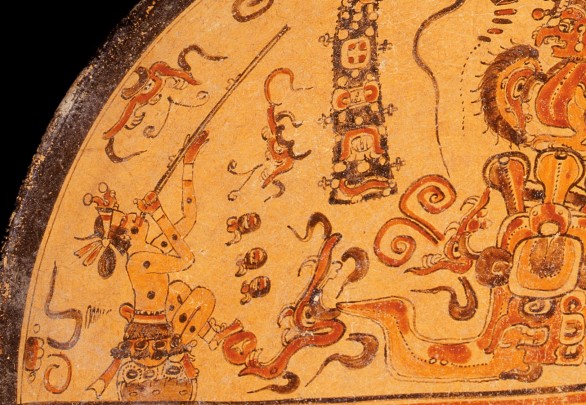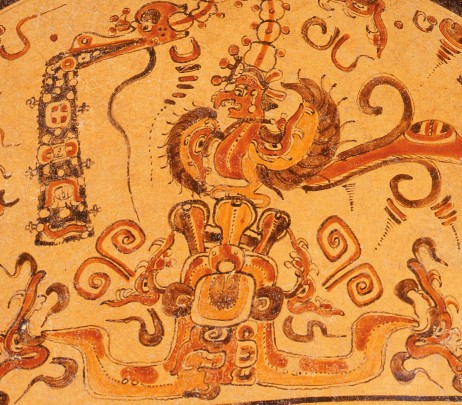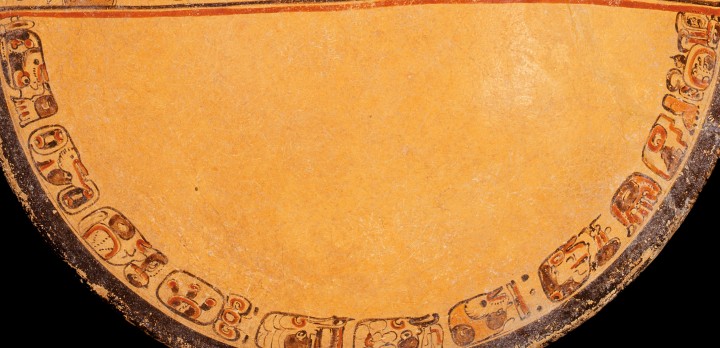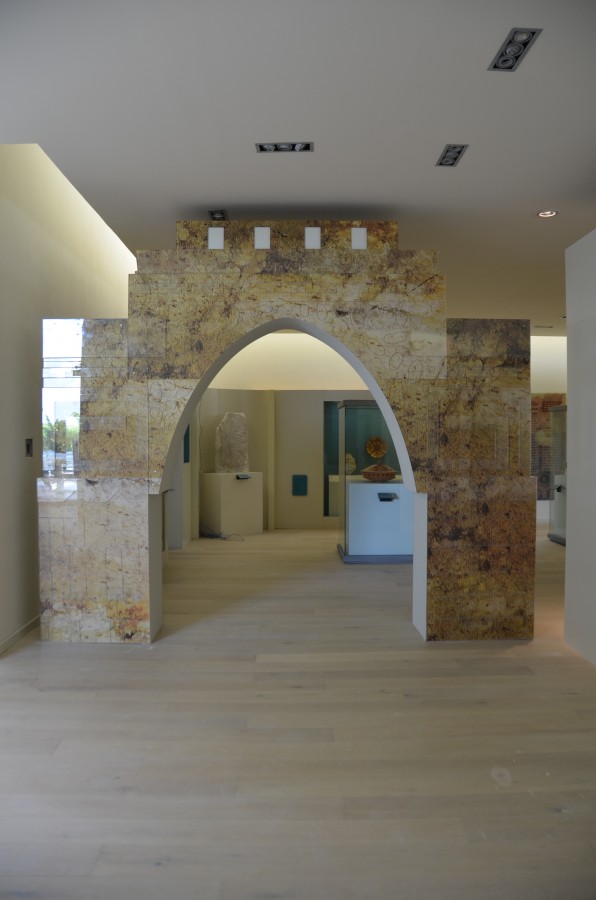The Blom Plate is a pre-Hispanic ceramic piece which came from the Bay of Chetumal in the south of Quintana Roo. It shows a scene from the mythical past when the earth was inhabited by supernatural beings, before the arrival of humankind. The events portrayed were described in the Popol Vuh, the best known literary text of the K'iche' Maya, which is a collection of mythical narratives and stories possibly dating as far back as 300 BC, to the origins of the Mayan cultural tradition.
The plate’s iconography is in two sections. In the center of the first there is a representation of Itz’am Yeh, known in the Postclassic period as Vucub Caquix or Seven Macaw, which in the Mayan tradition was a monstrous bird which usurped the sun by attempting to outshine it with its brilliant jewels. Tired of such trickery, the twin brothers Xbalanque and Hunahpu decided to kill it, picking up their blowpipes and heading to the nance tree where the bird sat to eat its fruit every day. This was the precise moment captured by the piece.
In the lower part there is a glyphic inscription of a type known as a Primary Standard Sequence (PSS), in other words a sequence of glyphs which is commonly repeated in Mayan funerary polychrome ceramics of the Late Classic. This class of inscription was discovered by epigrapher Michael Coe, and other researchers such as David Stuart have used this to carry out further analysis of Mayan pottery. Thanks to these specialists we know that the PSS refers to historical figures, almost always to governors or nobility, who were the owners or users of the pieces in question. Hence the Blom Plate says: “Dedicated... on 8 muanil writing [of] Ch’ak Ch’ok Kelem [Great Young Prince]...” (William Mex, personal communication). It was certainly in reference to the person who was buried together with the piece, which appears to have been used to serve tamales.
It is worth mentioning that this exceptional object was found in the 1940s during the construction of the city of Chetumal’s first runway, at the foot of a beacon which is still in use. All that is known is that the machinery used to level the land destroyed the mound covering a tomb containing rich offering. Roy H. Jones, an American engineer who worked on the construction team, was impressed by the quality and good state of conservation of the piece, which persuaded him to keep it. Years later Jones went to live in the city of Oaxaca, where he met Frans Blom, the celebrated Danish archeologist and ethnographer and allowed him to examine his treasure. In 1950 Blom published an article which brought the plate to the attention of the international academic community, and that is how the Blom Plate came to be named.
Despite the recognition which it acquired as a result of its rich iconography, the plate remained in the hands of Jones until 1985, when he decided to donate it to the Palacio Cantón Regional Anthropology Museum in Merida. It was received by Peter Schmidt who was the director at the time. It finally returned to the state of Quintana Roo upon the inauguration of the Cancun Maya Museum in 2012, and that is where it is currently held.

